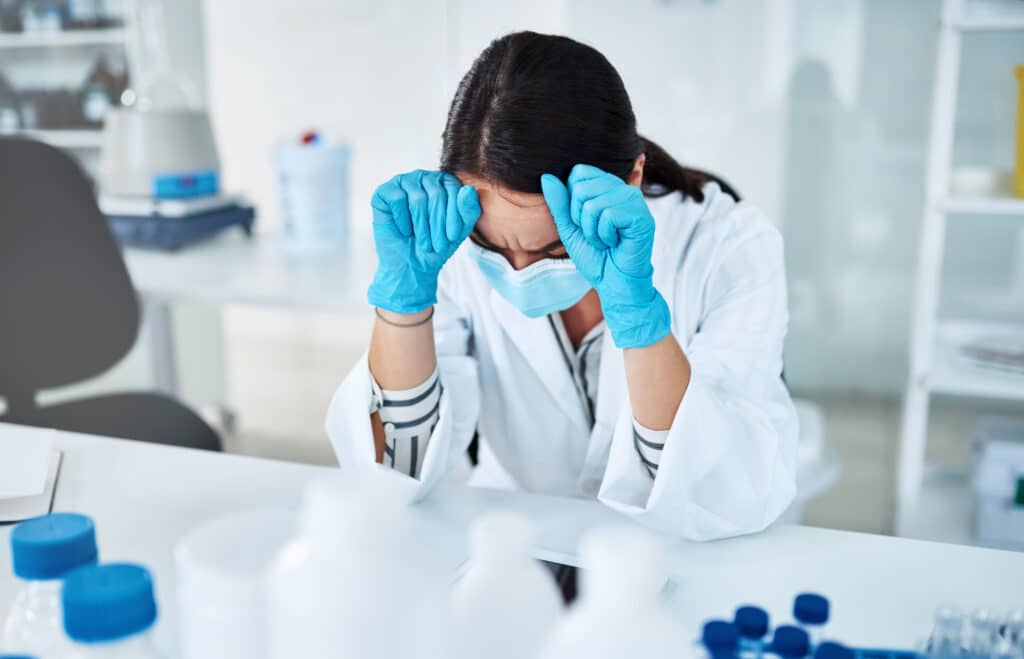I have been studying the origin of epidemics for over a decade, through the perspective of a physician with formal training in outbreak investigation and as a researcher of biowarfare and bioterrorism, long before the COVID-19 pandemic. I wrote a whole book on the topic, Dark Winter, and established a course at UNSW called “Bioterrorism and Health Intelligence” in 2015, which teaches students some of the methods for investigating the origin of epidemics. My research program has a focus on risk analysis tools to analyse epidemics, and I have worked with law enforcement and military stakeholders on biosecurity. There are established tools for risk analysis of origins of epidemics, which we have been researching for a long time, but few people in public health or virology are aware of them. We used the Grunow Finke tool in our paper on the origin of SARS-CoV-2. Grunow and Finke are scientists who were at the time working in the German Armed Forces Medical Academy and developed a tool to study an outbreak of tularaemia in Kosovo from 1999-2000. A range of other tools have also been developed, but the Grunow-Finke tool remains the most widely used. In our study, we used a modified version of this tool which has been tested and trained for improved sensitivity. Interesting, PLA military scientists in China have been watching our past work on origins of epidemics, and developed their own version of the tool (citing several of our papers on the topic), but have yet to apply it to SARS-CoV-2.
There has been relatively little published in the medical literature that seriously investigated the possibility of an unnatural origin of SARS-CoV-2, and those who have sought to publish such work have come up against major pushback or have had difficulties and delays getting their work published. Instead, the work of independent researchers and information revealed by Freedom of Information requests from investigative journalists has contributed to much of our knowledge of the origins of SARS-CoV-2. The DRASTIC Collective, many of whom wish to remain anonymous for reasons of security and privacy, made some key discoveries, as did investigative journalists.
The pushback against any suggestion of an unnatural origin of SARS-CoV-2 by some in the science community is not surprising. As I detailed in my book, throughout history, there has been denial and cover up of unnatural outbreaks, which speaks to a larger cultural and ideological problem within science and medicine. It took 100 years for the harms of tobacco to be accepted in medicine, because of a long tug-o-war between scientists who showed these harms, and scientists who generated tobacco-funded counter-narrative research suggesting cigarettes were safe, with many medical journals continuing to advertise cigarettes on their pages until the 1960s. I give many other examples in my book.
If a lab accident caused the pandemic, it would likely result in greater regulation of research on enhanced potential pandemic pathogens (ePPP), as the US NSABB has proposed. Our paper, published today in Risk Analysis, does not give a definitive answer, but uses the modified Grunow Finke tool to provide a probability of natural or unnatural origin. Knowing what a touchy topic this is, we were fairly conservative in our paper, and still found a reasonable probability that the origin of SARS-CoV-2 is unnatural. In other words, however the scores may be reasonably changed by different scorers, there is a credible probability SARS-CoV-2 arose from a laboratory. It may also have arisen naturally, and we may never obtain definitive proof either way, unless we find a natural host or get a confession, but what our research shows is that we should not dismiss a lab leak as a fringe conspiracy theory.
A confession did occur with the Sverdkovsk anthrax leak in 1979. At the time the Soviets denied it, claiming it was a natural outbreak related to animals in the markets. They made a theatrical show of killing dogs in the markets. The US experts agreed with them that it was a natural outbreak, despite signals and satellite intelligence suggesting a major incident at the bioweapons facility. It wasn’t until the fall of the Soviet Union 12 years later, when Boris Yeltsin confessed, that the truth was revealed.
As I outline in my book Dark Winter, history is littered with unnatural outbreaks that have failed to be identified as such. In public health, all outbreaks are assumed to be natural and there is no training or culture of evaluating origins of epidemics. Historically, most unnatural epidemics have been assumed to be natural, and suggestions they were unnatural have been resisted by many medical and science experts. The Rajneesh bioterrorism attack is the most puzzling case in trying to understand the inbuilt resistance to considering unnatural origins – in that case there was no government culpability, no state secrets to hide, it was a simple case of a cult that poisoned people in Oregon with salmonella. Why then, did the public health experts oppose the smart politician who correctly suspected it to be bioterrorism? Why was there silence for 12 years and the truth about the outbreak hidden from the public? If you want the answers and all the other historical examples, you will have to read my book, I’m afraid. But the refusal to consider unnatural origins of epidemics is the backdrop upon which the question has been asked of SARS-CoV-2.
The question of origins of a virus cannot be answered by phylogenetics alone, because gain-of-function research (for example a virus which has undergone serial passage in an animal model) may not leave obvious signs of manipulation, and a resulting virus may appear “natural”. The steady accumulation of intelligence since 2020 (detailed in our paper) has added to our understanding about the possibility of a lab leak. However, there are still gaps in our knowledge.
Evaluation of the origin of epidemics needs a multi-dimensional analysis of a range of different intelligence. The skills needed to answer questions of origin are inter-disciplinary, and the process is like detective work or forensics, with virology playing only one part. The Grunow Finke tool and similar tools provide a framework for doing this, and are most widely used in military contexts. The Grunow Finke tool is an established tool, and we used it to show that an unnatural origin is as plausible as a natural one. The analysis considers a large range of different intelligence and analyses it together – rather than a narrow focus on only the wet market epidemiology or only on the phylogenetics. A natural origin is, of course still possible, but there are no grounds to dismiss the suggestion of an unnatural origin.
For policy, this matters because we have more control over prevention of unnatural outbreaks, many of which arise from simple human error or inadequate biosafety. Lab accidents are common, and a catalogue of some of these is available through the American Biosafety Association. We can learn from these and do more to prevent such accidents. A recent paper by Blacksell and colleagues showed hundreds of such accidents in the last 20 years. Poor biosafety procedures in bat sampling and at the Wuhan Institute of Virology were documented, a close relative of SARS-CoV-2, RATG13 was being studied at WIV.
Improving processes and protocols for biosafety can make a difference. The community are the most important stakeholder who may benefit from scientific research but may also be harmed by the risks of research on potential pandemic pathogens. If the worst pandemic of our lifetimes could possibly have arisen from a lab accident, I believe the public, whose taxes fund much of the research, would absolutely expect the scientific community to improve biosafety in the future.
Quantum advances in technology in genetic engineering and synthetic biology, and greater access and lower cost of such methods, poses an ever increasing risk of lab generated pandemics. The recent discovery of an illegal biolab in Reedley, California shows us another dimension of this risk, that of undocumented biolabs in the community. We need expanded tools for outbreak detection and analysis, like the Grunow Finke tool, open-source intelligence, and other risk analysis tools to be used routinely in outbreak investigation, but are a long way from achieving that. If the question “is this outbreak natural or unnatural?” is never allowed to be asked, it stands to reason that unnatural outbreaks will never be identified. Asking questions is the foundation of science.
Raina MacIntyre is a Professor of Global Biosecurity and Head of the Biosecurity Program at the Kirby Institute, at the University of New South Wales, Australia. She leads research programs in the control and prevention of epidemics, pandemics, bioterrorism, and emerging infections and has extensive field experience in outbreak investigation and control. She is currently a member of the WHO COVID-19 Vaccine Composition Technical Advisory group and the WHO SAGE Smallpox and monkeypox working group. She developed EPIWATCH, an AI-driven epidemic observatory that harnesses open-source data and has proven capability in early detection of serious outbreaks. She has been researching the increasing risk of unnatural pandemics for over a decade and is the author of Dark Winter – an insider’s guide to pandemics and biosecurity (2022).



Many thanks Raina for this complex thoughtful discussion of whether Covid had a natural or
unnatural origin